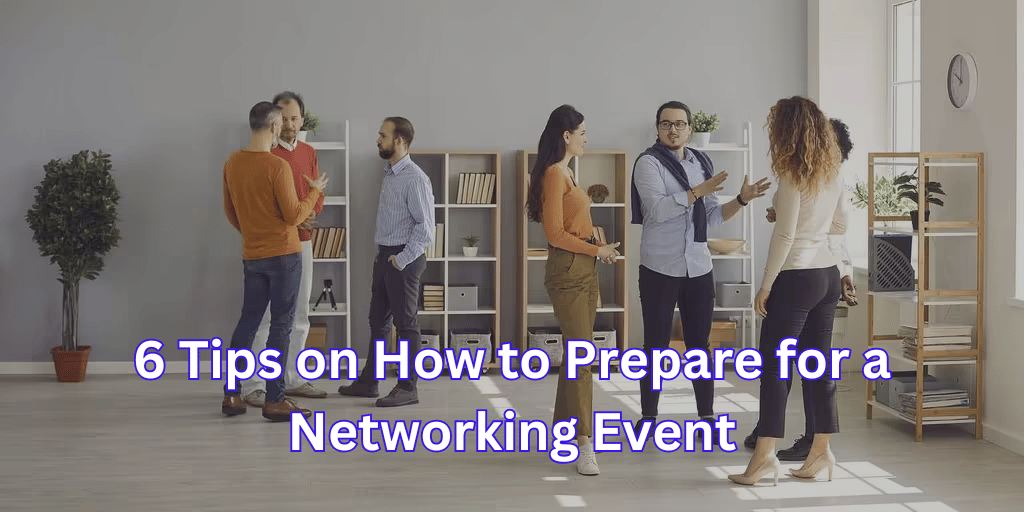Networking events can be pivotal moments in advancing your career or business. Whether you’re a freelancer, entrepreneur, or professional seeking connections, these gatherings offer a unique opportunity to expand your network, foster meaningful relationships, and open doors to new opportunities. However, stepping into a room full of strangers can be daunting if you’re not adequately prepared. From perfecting your pitch to making a memorable impression, preparation is key to making the most of these events.
In this blog, we’ll guide you through seven actionable tips to prepare effectively for your next networking event. These insights will not only help you feel confident but also ensure that you maximize your efforts and leave with valuable connections. Let’s dive in and get you ready to shine at your next networking opportunity!

1. Understand the Event’s Purpose and Audience
Before attending a networking event, take time to research its purpose and the type of audience it will attract. Is it a professional meetup, industry conference, or casual gathering? Understanding the event’s focus allows you to tailor your approach. For instance, if it’s an industry-specific event, familiarize yourself with current trends, topics, and notable attendees who might be present.
This knowledge positions you as a well-prepared participant and helps in breaking the ice with like-minded individuals. Use tools like LinkedIn or the event’s official website to learn about attendees or speakers. By aligning your preparation with the event’s theme, you create a strong foundation for engaging conversations that are both relevant and impactful.
2. Set Clear Goals for Networking
Attending a networking event without a goal is like setting sail without a destination. Determine what you want to achieve—whether it’s finding potential clients, exploring job opportunities, or learning about industry trends. Clear objectives help you focus your efforts during the event.
For instance, if your goal is to secure business collaborations, prepare a list of key individuals or companies you’d like to connect with. Approach the event with a purpose-driven mindset, which will guide your interactions and ensure you make meaningful connections that align with your objectives.
3. Polish Your Elevator Pitch
Your elevator pitch is your first impression and an opportunity to introduce yourself effectively. Spend time refining a concise and engaging pitch that communicates who you are, what you do, and why it matters. Keep it between 30-60 seconds and practice delivering it naturally.
Avoid jargon and focus on conveying enthusiasm and clarity. Tailor your pitch depending on the audience—highlighting elements that resonate with the event’s theme. A strong elevator pitch ensures you’re memorable and sparks interest in further conversation.
4. Dress to Impress and Stay Comfortable
First impressions matter, and your attire speaks volumes about your professionalism. Research the event’s dress code, aiming for an outfit that balances professionalism and comfort. Avoid overly formal or casual attire unless specifically recommended.
Comfort is equally crucial; you’ll be standing and interacting for long periods, so choose shoes and clothing that keep you confident and at ease. When you look and feel good, it shows in your interactions and boosts your confidence.
5. Prepare Essential Materials
Never attend a networking event empty-handed. Bring business cards, a digital or physical portfolio, and any other materials that showcase your work or brand. These items provide tangible takeaways for the people you meet, ensuring they remember you after the event.
Additionally, consider having digital versions of your portfolio or LinkedIn profile handy on your smartphone. Being prepared with these essentials reflects your professionalism and readiness to connect meaningfully.
6. Practice Active Listening and Engagement Techniques
Networking isn’t just about talking; it’s about building relationships. Practice active listening by genuinely paying attention to what others say, asking insightful questions, and showing interest in their stories.
Engage in meaningful conversations by avoiding surface-level small talk. Instead, aim to understand the needs and goals of the person you’re speaking with. This approach fosters trust and creates a strong foundation for lasting professional relationships.
Conclusion
A successful networking event begins long before you step through the door. By understanding the event’s purpose, setting clear goals, polishing your pitch, and dressing appropriately, you can confidently navigate any networking opportunity. Equally important is coming prepared with materials and mastering the art of active listening to create genuine connections.
With these seven tips, you’re equipped to make a powerful impression and expand your professional network. Remember, the key to networking is not just collecting contacts but building relationships that last. So, take a deep breath, prepare thoroughly, and seize every opportunity to connect!
